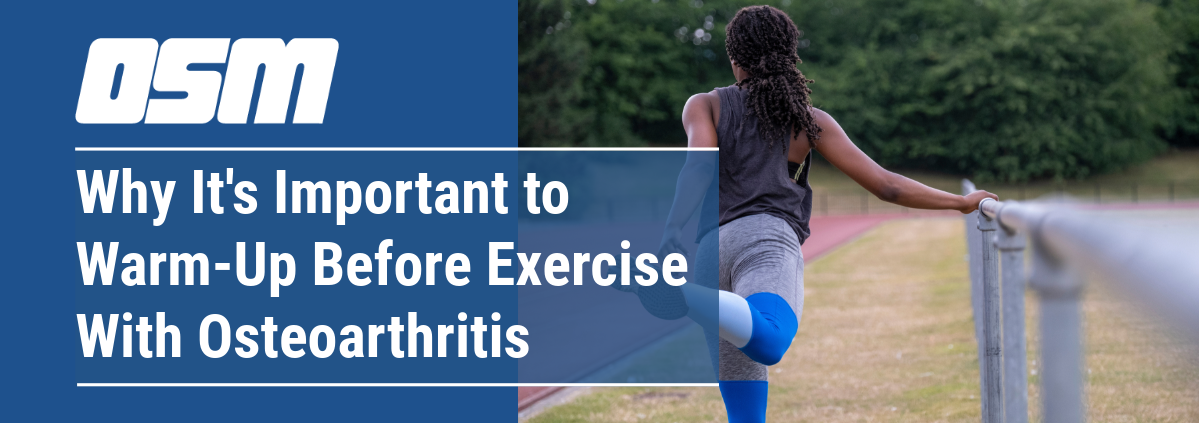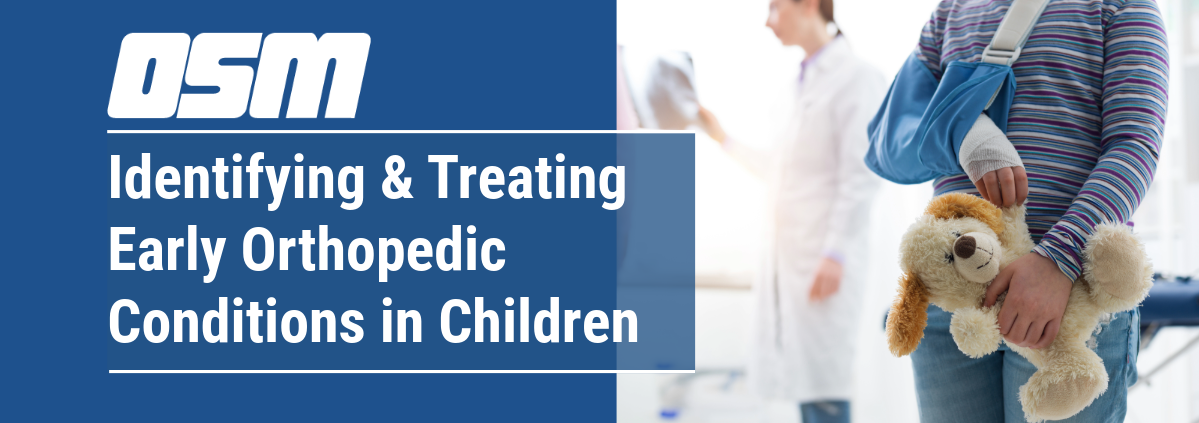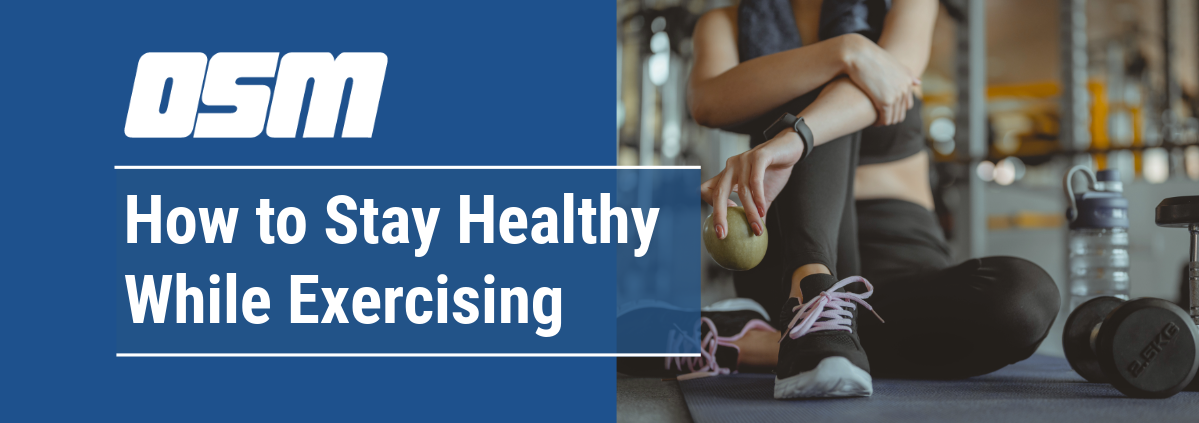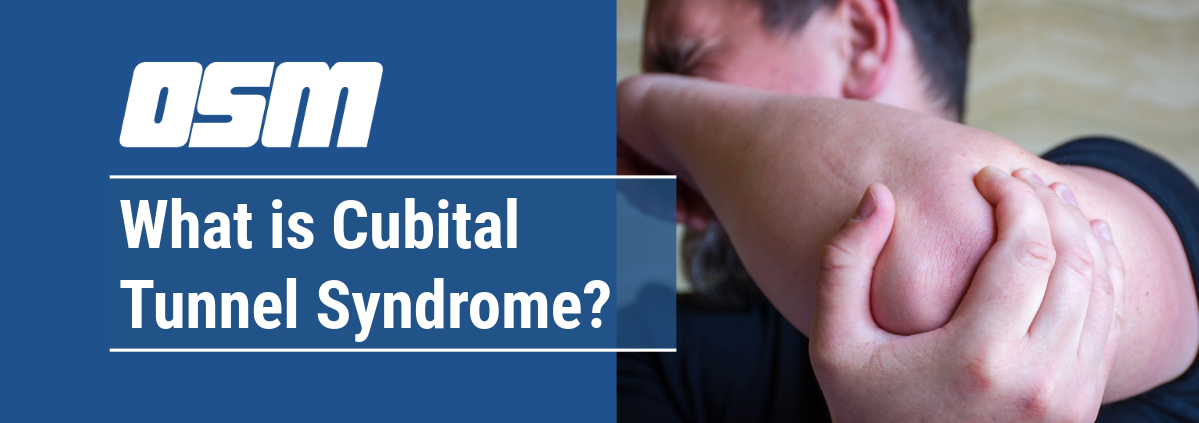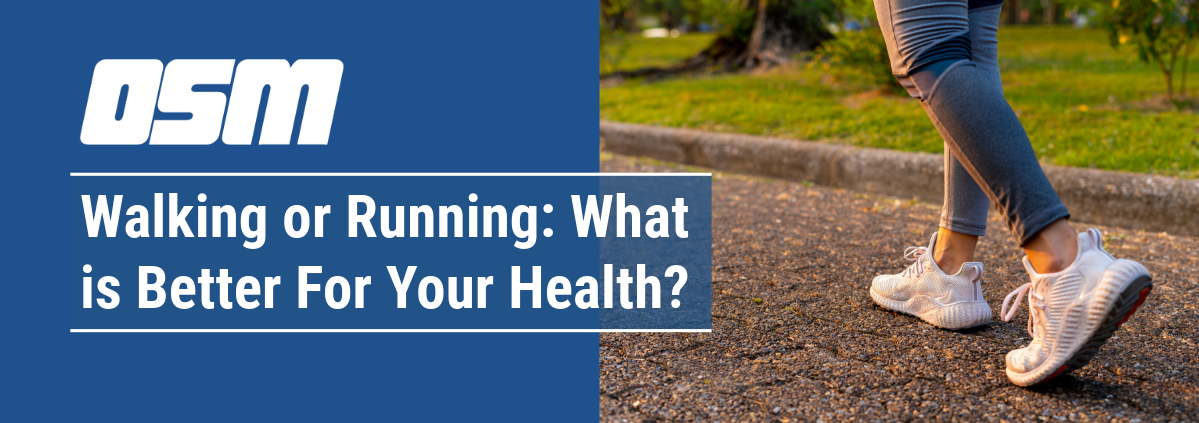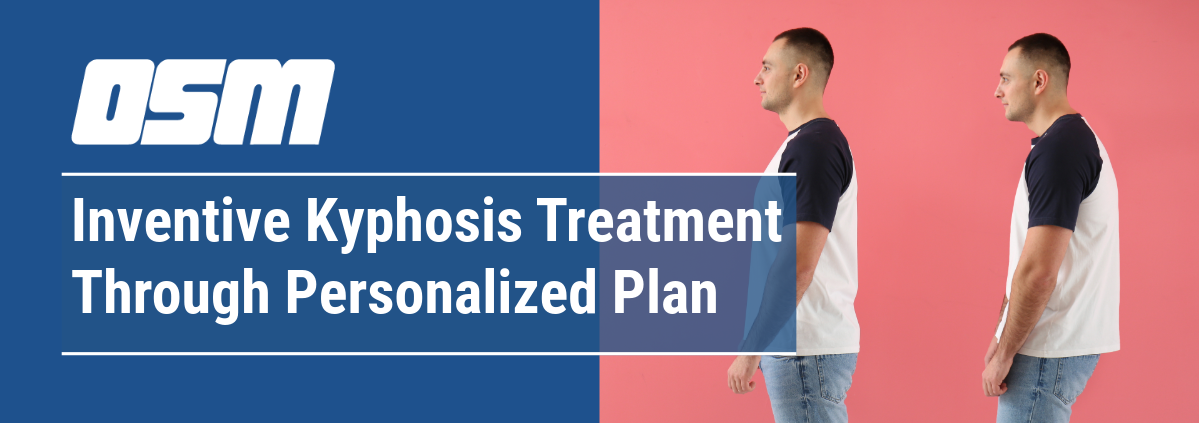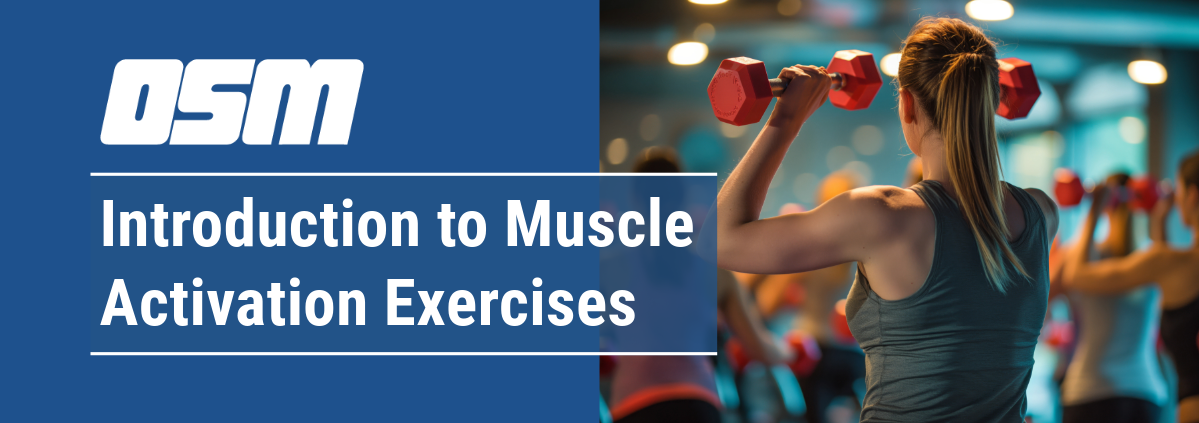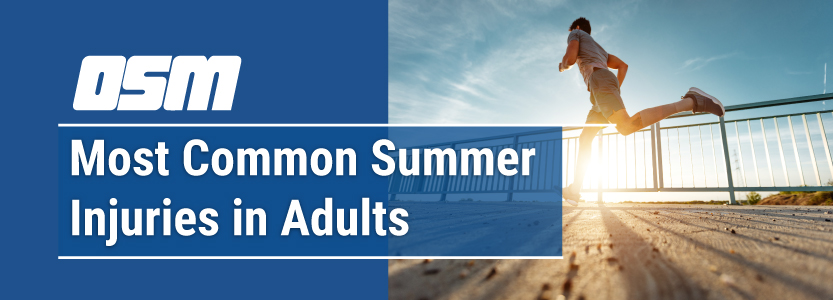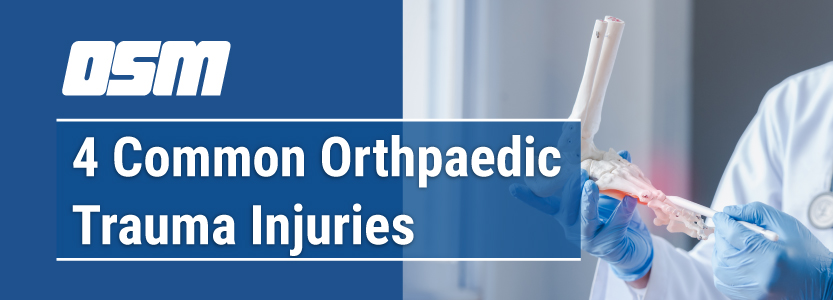Article featured on BenchMark Physical Therapy
As the warmer months arrive and the days get longer and sunnier, Americans are eager to make the most of the summer season. For many, that means resuming favorite outdoor sports and recreation activities and venturing out to explore new and familiar destinations.
But summer fun often comes with the added risk of injury. Emergency rooms across the nation report an uptick in visits during June, July, and August—more than 40,000 every day in fact. Here are the most common summer injuries in adults and tips to prevent them for a safe and memorable season.
Heat-Related Illness
In the United States and across North America, record-high temperatures are becoming more frequent, directly impacting human health. Extreme heat events pose a significant threat to human life. According to the CDC, more than 67,000 people visit emergency rooms annually for heat and more than 9,000 are hospitalized.
What is Heat-Related Illness?
Heat-related illness is an umbrella term that refers to several serious health conditions caused by exposure to prolonged or abnormal heat and humidity levels without relief.
Heat cramps are painful muscle spasms and cramps during or after intense physical activity in the heat. Heat cramps are the mildest type of heat illness, and generally improve with rest and hydration.
Heat exhaustion is more serious and occurs when the body loses salt and water from excessive sweating without replacing fluids and salt. As a result, the body is unable to cool itself. If left untreated, heat exhaustion can progress to heat stroke. Heat exhaustion symptoms include heavy sweating, cold, pale, clammy skin, nausea/vomiting, headache, or dizziness.
Heat stroke is the most serious type of heat illness that develops when the body’s internal regulating system is overwhelmed by high heat. A high body temperature, hot, red, dry or damp skin, dizziness, headache, and confusion are all potential signs of heat stroke. Heat stroke is life-threatening and requires immediate medical attention.
Tips to prevent heat illness:
- Drink plenty of fluids throughout the day, not only during physical activity.
- Wear light, breathable clothing on scorching summer days.
- Plan sports and vigorous activities for the coolest time of the day.
- Always use sun protection sunscreen, hats, sunglasses, and UPF clothing.
- Warm up and cool down before and after intense activity.
- Stay indoors on extremely hot and humid days.
Sports Injuries
Many adults have more free time to resume their favorite hobbies in the summer months. Plus, the weather is more conducive to outdoor fun playing golf, tennis, pickleball and other sports. But if it’s been a few months since you’ve dusted off that racquet, take proper precautions to safely return to exercise this summer.
Common sports injuries include:
- Fractures: partial or complete break in any of the bones of the body from repeated stress or a single trauma
- Dislocations: separation of two bones where they meet at the joint, often from a direct blow to the body from a fall or contact sport
- Strains: tears or overstretching of the tendons that attach muscle to bone, or in the muscles themselves
- Sprains: tears or overstretching of the fibrous connective ligaments that connect bones to other bones
- Overuse injuries: damage to bone, ligaments, tendons, or muscles caused by repetitive stress on those structures
Sports Injury Prevention Tips
As we age, the body becomes more prone to musculoskeletal injuries, and it takes longer to recover from them. Prevention is key. Pre- and post-workout stretches prepare the body for activity and lower body temperature and heart rate after it to signal the body to begin the recovery process.
Adding some variety into your summer workout routine is also good for injury prevention. Cross-training allows you to focus on different muscle groups to avoid overuse injuries that can put a damper on your summer plans.
Hydration for Injury Prevention
Proper hydration aids with cooling down after activity, and it helps with circulation to deliver oxygen and nutrients throughout the body to enhance recovery. Hydration also keeps the joints properly lubricated to reduce injuries and improve range of motion.
While the ideal liquid intake varies slightly based on age, weight, and activity level, women should focus on getting at least 11.5 cups (or 2.7 liters) of water per day and men should try to consume 15.5 cups (or 3.7 liters) of water on an average day. Increase fluid intake in hot weather and when recovering from an illness.
Running Injuries
If you are a runner living in an area that experiences a four-season climate, you probably look forward to transitioning from treadmill to the outdoor track when the weather gets warmer.
There are plenty of benefits to walking or running outside. You burn more calories and boost your mood and vitamin D levels to start. But running on concrete is hard on the body’s joints and uneven surfaces increase the risk of falls and fall injuries. If you can, opt for asphalt, pea gravel, or dirt which are all gentler on the body.
If you experience ankle pain, knee pain, or hip pain, take these symptoms as a sign to dial back your running program and schedule a physical therapy appointment. Pain always has something important to tell us. You might have an underlying musculoskeletal injury or anatomical difference that can be overcome with personalized mobility and strengthening exercises.
In addition to stretching and strengthening with your physical therapist hydrating, stretching, and wearing a supportive, well-fitting running shoe can also be effective for preventing common running injuries.
Biking Injuries
Cycling is another activity that requires some care and preparation to move from indoors to outside. However, if you are an avid indoor cyclist, chances are you have already strengthened many of the structures that are vulnerable to injuries: particularly the kneecap (patella), upper and lower legs, ankles, and wrists and forearms.
Yet the risk of a concussion and other traumatic brain injuries (TBIs) from a bike accident increases significantly when you bike outdoors. Wearing a bike helmet reduces your risk of high injury by up to 85%. For helmet safety tips, visit NHTSAs bike helmet fit guide.
Water Injuries
If swimming, boating, or water sports are on your summer bucket list, be mindful of the risks associated with these activities. First, avoid running near pools and other wet surfaces to prevent falls. And never dive in shallow water, as diving accidents are a leading cause of spinal cord injuries.
Drowning occurs in seconds and is often silent. It can happen at any time and any location where there is water. While drowning is a leading cause of death among children ages 1-4, people of all ages and swimming abilities can drown. Those who survive a non-fatal drowning are often left with permanently disabling brain injuries. Fortunately, these injuries and fatalities are preventable.
The American Red Cross water safety guide offers some additional tips to prevent drowning and make water safety a priority for all:
- Always swim with a buddy.
- Never swim while impaired by alcohol or other substances.
- Wear a U.S. Coast Guard-approved lifeguard jacket when fishing, boating, or using recreational watercraft, even if you do not plan to go in the water.
It is also important to be a “water-watcher” who looks out for others, especially children, who are in the water. The signs of drowning are not as obvious as you might believe. Someone in trouble can be quiet and calm.
If someone is bobbing up and down in the water, holding their arms out to the side or front attempting to “paddle,” and seemingly gasping for air, they may be drowning. Sometimes it is the look of panic that indicates trouble. Always err on the side of caution and provide immediate assistance.
Burns
Summer is the time for barbecues, camping, picnics, and fourth of July fireworks. Fire safety is essential to prevent painful burn injuries.
Always create a safety zone of at least three feet around campfires, grills, and firepits. Use long-handled tools and wear short sleeves when building a fire or cooking on the BBQ. Choose public firework displays and leave the lighting to the professionals.
If you or someone with you is burned, place the injured area in cool water for three to five minutes. Cover it with a dry, sterile cloth. Go to the emergency room for burns longer than the palm of your hand.
What Is Sunburn, and How Can I Prevent It?
Sunburn is skin damage caused by exposure to the sun’s ultraviolet (UV) rays. Initially, the skin feels hot, red, and sore. In the days that follow, the skin begins to peel and heal. Even though the skin appears to heal, a single burn can cause long-term skin damage and increase the risk of skin cancer.
Obviously, sunburns are more common during the summer months because we spend more time outside. Protect your skin with UV-resistant clothing, sunscreen, and shade when available. Apply sunscreen liberally and frequently over all exposed areas. Use water-resistant sunscreen if you are planning to swim.
Choose a sunscreen that has the “UVA” logo and has four-star protection against UVA rays which are linked to skin aging. The SPF should be at least SPF30 to protect against UVB rays which are associated with skin burning.
Bites and Stings
Insect bites and stings are another common summer hazard. Other than a bit of soreness, swelling, and itching, these injuries are typically nothing more than a nuisance. However, some people are highly allergic to bee stings or insect bites. Also, ticks, mosquitos, and some other insects can transmit diseases, so it’s best to prevent them as much as possible.
Use insect repellant outdoors and wear long sleeves and pants in areas of high insect activity. Check your body and clothing for ticks after spending time in woody or grassy areas. Keep bites and stings clean and watch for signs of infection.
Treat, Manage, and Prevent Common Summer Injuries with Physical Therapy
Your physical therapist may not be able to relieve your summer insect bites and stings, but they can be highly effective for treating and managing more serious musculoskeletal injuries. We have an extensive array of evidence-based techniques and treatments at our disposal to reduce pain and stiffness and improve the way your body moves and functions.
If you are getting ready to get back into action after a few months off, we can help you too. With targeted exercise therapy, together we will stretch and strengthen your muscles and joints so you can participate in your favorite activities safely and painlessly—while avoiding injuries.

